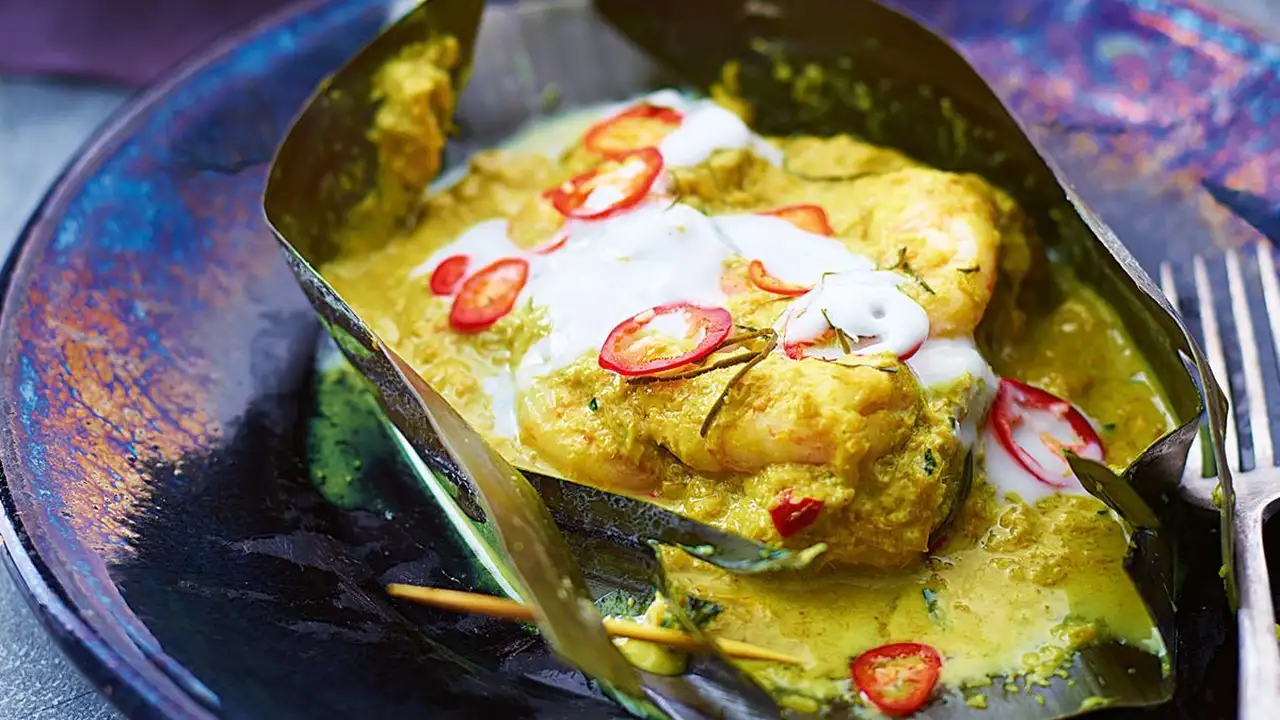Filipino Adobo: A National Dish

What is Filipino Adobo A Culinary Deep Dive
Okay, let's talk Adobo. If you're even remotely interested in Filipino cuisine, you've probably heard of it. But what *is* it, really? It's more than just a recipe; it's a method, a feeling, a cultural touchstone. Adobo, at its core, is a dish braised in soy sauce, vinegar, garlic, peppercorns, and bay leaves. Sounds simple, right? But the magic is in the variations, the family secrets, and the sheer adaptability of this incredible dish. Every family has their own version, and arguments can erupt over the "correct" way to make it. That's part of the fun!
Think of it like this: Adobo is like the little black dress of Filipino cooking. It's versatile, reliable, and always a crowd-pleaser. You can adobo almost anything – chicken, pork, beef, seafood, vegetables… you name it. And the best part? It's relatively easy to make, even for a cooking newbie. The vinegar acts as a preservative, which historically was super important before refrigeration. It's a dish born of practicality and ingenuity. It's also incredibly delicious. We're talking savory, tangy, garlicky goodness in every bite.
The History of Adobo Unveiling Filipino Heritage
Long before the Spanish arrived in the Philippines, the locals were already using vinegar and salt to preserve their food. This method, called "kinilaw," was a way to prevent spoilage in the tropical climate. When the Spanish colonizers arrived, they saw this method and called it "adobar," which means "to marinate" in Spanish. The name stuck, and the dish evolved over time, incorporating soy sauce (which came from Chinese traders) and other ingredients. So, Adobo isn't *entirely* Filipino in origin, but it's been so thoroughly embraced and adapted that it's become a symbol of Filipino identity. It's a beautiful example of cultural exchange and adaptation.
The Spanish influence is undeniable, but the Filipino ingenuity is what makes Adobo truly unique. Think about it: they took a preservation technique and transformed it into a culinary masterpiece. They experimented with different ingredients, different ratios, and different techniques until they created a dish that is both delicious and deeply meaningful. It's a story of resilience, creativity, and a love of good food.
Adobo Ingredients and Variations Exploring the Possibilities
The basic ingredients of Adobo are soy sauce, vinegar, garlic, peppercorns, and bay leaves. But from there, the possibilities are endless! Some people add sugar for a touch of sweetness. Others add potatoes or hard-boiled eggs to make it a heartier meal. Some use coconut milk for a richer, creamier sauce. And some even add chili peppers for a spicy kick. There’s no single “right” way to make Adobo. It’s all about personal preference.
Let's break down some common variations:
* **Chicken Adobo:** Probably the most popular version. Tender chicken pieces simmered in the savory sauce. * **Pork Adobo:** Often uses pork belly or shoulder for a richer, fattier flavor. * **Beef Adobo:** Usually uses tougher cuts of beef that benefit from the long braising time. * **Seafood Adobo:** Squid and shrimp are popular choices. Be careful not to overcook the seafood! * **Vegetable Adobo:** Eggplant, okra, and long beans are great options.And don't forget the regional variations! In some regions, they use annatto seeds for color and flavor. In others, they add pineapple juice for a tropical twist. The beauty of Adobo is that it's constantly evolving and adapting to local tastes and ingredients.
How to Cook Adobo Step by Step Guide
Okay, let's get cooking! Here's a basic recipe for Chicken Adobo:
- In a bowl, combine chicken pieces (about 2 lbs), 1/2 cup soy sauce, 1/4 cup vinegar (white or apple cider), 4 cloves minced garlic, 1 tablespoon black peppercorns, and 2 bay leaves. Marinate for at least 30 minutes, or up to overnight in the refrigerator.
- In a pot or Dutch oven, bring the marinated chicken to a boil over medium-high heat.
- Reduce heat to low, cover, and simmer for about 45 minutes to 1 hour, or until the chicken is cooked through and tender.
- Remove the chicken from the pot and set aside. Increase the heat to medium-high and let the sauce reduce until it thickens slightly.
- Return the chicken to the pot and toss to coat in the sauce.
- Serve hot with rice.
That's the basic recipe. Now, let's talk about some tips and tricks:
* **Don't be afraid to experiment with the ratios of soy sauce and vinegar.** Some people prefer a more sour Adobo, while others prefer a more savory one. * **Use good quality soy sauce.** It makes a big difference in the flavor of the dish. * **Don't skip the peppercorns!** They add a subtle but important flavor. * **Be patient.** The longer you simmer the Adobo, the more tender the meat will be. * **Serve with lots of rice!** You'll want something to soak up all that delicious sauce.Adobo and Side Dishes Perfect Pairings
Adobo is fantastic on its own, but it's even better when paired with the right side dishes. Here are a few of my favorites:
* **Steamed Rice:** A must-have! It's the perfect canvas for the flavorful Adobo sauce. * **Garlic Fried Rice (Sinangag):** Adds another layer of flavor and texture. * **Pickled Papaya (Atchara):** The acidity cuts through the richness of the Adobo. * **Steamed Vegetables:** Adds some freshness and balance to the meal. * **Eggplant Omelette (Tortang Talong):** A classic Filipino side dish that complements Adobo perfectly.Adobo Sauces and Marinades Enhance Your Cooking
Want to take your Adobo game to the next level? Try using a pre-made Adobo sauce or marinade. These are great for busy weeknights when you don't have time to make the sauce from scratch. Here are a few brands I recommend:
* **Mama Sita's Adobo Marinade:** A classic and reliable option. Available at most Asian grocery stores. Price: Around $3 per packet. Usage: Marinate your meat for at least 30 minutes before cooking. * **Datu Puti Adobo Series:** This brand offers a range of Adobo sauces with different flavor profiles, from mild to spicy. Price: Around $4 per bottle. Usage: Add to your dish during the cooking process. * **Excellent Adobo Sauce:** This is a high-end sauce, more expensive but with a rich flavour. Price: Around $10 per bottle. Usage: Marinate your meat for at least 30 minutes before cooking.When choosing an Adobo sauce or marinade, consider your personal preferences. Do you like a sweet Adobo, a sour Adobo, or a spicy Adobo? Read the labels carefully and choose one that sounds appealing to you.
Adobo Products and Recommendations Exploring the Market
Beyond sauces and marinades, there are other Adobo-flavored products you might enjoy. Here are a few of my favorites:
* **Adobo Seasoning:** Perfect for adding a quick burst of Adobo flavor to anything from eggs to popcorn. Available at most grocery stores. Price: Around $5 per bottle. Usage: Sprinkle on your food to taste. * **Adobo Peanuts:** A delicious and addictive snack. Available at most Asian grocery stores. Price: Around $2 per bag. Usage: Enjoy as a snack. * **Adobo Potato Chips:** A fun and flavorful twist on a classic snack. Available at some specialty grocery stores. Price: Around $3 per bag. Usage: Enjoy as a snack.These products are a great way to experience the flavors of Adobo in new and exciting ways. They're also perfect for when you're short on time or don't feel like cooking a full meal.
Comparing Adobo Brands Quality and Value
Let's dive into a comparison of some popular Adobo sauce brands:
* **Mama Sita's vs. Datu Puti:** Mama Sita's is known for its traditional flavor profile, while Datu Puti offers a wider range of flavors. Mama Sita's is also generally more affordable. * **Datu Puti vs. Excellent Adobo Sauce:** Excellent Adobo Sauce is known for its premium ingredients and complex flavor, while Datu Puti is more widely available and affordable. Excellent Adobo Sauce would be recommended for special occasions.Ultimately, the best Adobo sauce brand for you depends on your personal preferences and budget. Experiment with different brands and find one that you love.
Adobo Cooking Tips and Tricks Mastering the Art
Want to become an Adobo master? Here are a few more tips and tricks:
* **Use a heavy-bottomed pot or Dutch oven.** This will help prevent the Adobo from burning. * **Don't overcrowd the pot.** Cook the meat in batches if necessary. * **Skim off any scum that rises to the surface.** This will help keep the sauce clear. * **Adjust the seasoning to your liking.** Add more soy sauce for a saltier flavor, more vinegar for a sourer flavor, or more sugar for a sweeter flavor. * **Let the Adobo rest for a few hours before serving.** This will allow the flavors to meld together. * **Reheat Adobo gently.** Overheating can make the meat tough.Where to Eat Adobo Best Restaurants and Eateries
If you don't feel like cooking, there are plenty of great restaurants that serve Adobo. Here are a few of my favorites:
* **[Insert Name of Filipino Restaurant 1]:** Known for its authentic and traditional Adobo. [Insert City/State]. * **[Insert Name of Filipino Restaurant 2]:** Offers a modern take on Adobo with creative flavor combinations. [Insert City/State]. * **[Insert Name of Filipino Restaurant 3]:** A casual eatery that serves delicious and affordable Adobo. [Insert City/State].Check online reviews and ratings before you go to find the best Adobo restaurant in your area.
Adobo Around the World Global Influences
While Adobo is a Filipino dish, it has been influenced by other cultures throughout its history. The Spanish contributed the name and the braising technique, while the Chinese contributed soy sauce. Today, Adobo is enjoyed by people all over the world.
In recent years, Adobo has become increasingly popular in the United States and other countries. Filipino restaurants are popping up everywhere, and Adobo is often featured on their menus. Many chefs are also experimenting with Adobo, using it in creative and innovative ways.
:max_bytes(150000):strip_icc()/277019-baked-pork-chops-with-cream-of-mushroom-soup-DDMFS-beauty-4x3-BG-7505-5762b731cf30447d9cbbbbbf387beafa.jpg)






